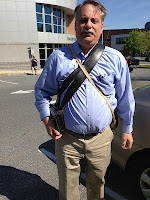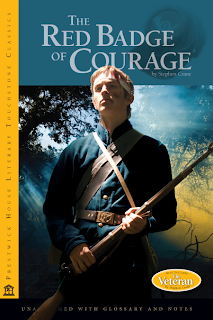by Rachel Carey
Participating in class discussion has never been the easiest thing for me. The ideas are normally there, but sharing them in front of a class full of my peers sometimes proves to be too daunting. I know I’m not the only student like this — the only student that would rather write her thoughts in a research paper than say them aloud to an entire classroom — and I’ve gotten better, which is good because I’ve come to realize how valuable openly discussing literature is, especially in the English classroom. Here are a few notable practices my teachers throughout the years have used that have helped me become more comfortable speaking up:
1. Icebreakers: I know I am more likely to talk when surrounded by people that I feel comfortable around. Even the corniest of icebreakers (as long as they’re not done too repetitively) can help create an environment that better fosters solidarity and individual student participation.
2. Circling up: Really, any redistribution of the desks so that the teacher is no longer in front of the students but among the students makes the setting less intimidating. I like putting the desks in a circle best because then not only is the teacher sitting down but the students are able to look directly at each other too. It makes the discussion feel less like a lecture and more like a casual conversation between friends.
3. Question and Comment Write-Ups before Class: This is a practice that most of the teachers and professors I’ve had have utilized. Instead of relying on a student’s (sometimes) faulty memory, have each student bring a list of questions and comments to class every day about the reading the night before. This worked for me for two reasons: it ensured that I read the material and it made sure I had something to contribute without having to come up with it on the spot (which was always a little nerve-wracking).
4. Group Presentations: Group presentations can be really really good or really really bad — the main reason for the bad being because they can be really distracting. But, putting the negatives aside, dividing a class up into four or five decently-sized groups is a good way in which to take the pressure to talk off of the individual. This practice can familiarize students with each other, and it’s also helpful because the students can discuss the literature and get feedback about their opinions from their peers before presenting their ideas to the class.
5. Unassigned Seats: I know this goes against the grain of a very common and understandable teaching practice — the reason assigning seats is necessary is because it helps decrease how much students talk to each other while the teacher is trying to talk … which makes sense. Take the following with a grain of salt, but I’ve found that I’m more likely to speak up in class discussion when I’m surrounded by the people I know best.
In the best-case scenario (and in the one in my head), every single student in an English class would be best friends and it wouldn’t matter where any of them sat … but in high school, especially for the quieter students among us, assigned seats can feel kind of awkward sometimes; and there is nothing worse than being stuck between a group of people that won’t stop talking when all you’re trying to do is listen.
In the best-case scenario (and in the one in my head), every single student in an English class would be best friends and it wouldn’t matter where any of them sat … but in high school, especially for the quieter students among us, assigned seats can feel kind of awkward sometimes; and there is nothing worse than being stuck between a group of people that won’t stop talking when all you’re trying to do is listen.
Hopefully, I’ve been able to shed some light on the student’s side of things for all the readers out there. If you have anything else you’d like to add (or disagree with), feel free to leave your thoughts in a comment!
Rachel Carey is a summer intern at Prestwick House. She is also a senior at the University of Delaware, where she studies English with a concentration in Creative Writing. During the school year, she is an active editor and writer for Caesura and The Main Street Journal, both of which are prominent literary magazines on campus, as well as Vice President of The Blue Pen Society writing club.


































